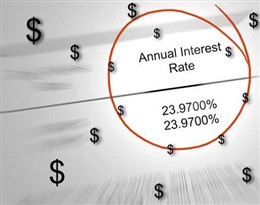Content

The future value is not used in this calculation, therefore the fv argument is omitted. All the arguments must be numeric, otherwise the PV function returns a #VALUE! If omitted, it is assumed to be 0, and the fv argument must be included. Instead of building formulas or performing intricate multi-step operations, start the add-in and have any text manipulation accomplished with a mouse click. Some keys to remember for PV formulas is that any money paid out should be a negative number. You should invest $1,325.84 every month for the next 5 years at 9% interest rate to have $100,000 at the end of the period. If you find this topic interesting, you may also be interested in our future value calculator.
- This is a critical area of the standard and is susceptible to manual error.
- The answer tells us that receiving $10,000 five years from today is the equivalent of receiving $7,440.90 today, if the time value of money has an annual rate of 6% compounded semiannually.
- The present value of annuity can be defined as the current value of a series of future cash flows, given a specific discount rate, or rate of return.
If we wish to create a PV calculator that can handle both periodic and single payments, we’ll need to use the Excel PV function in its entirety. To begin, just like the screenshot below, assign cells for all arguments, along with the optional ones. We have already seen how to calculate the present value and future value of annuities.
Present Value vs. Future Value: What is the Difference?
In this example, the pmt argument is a negative number because we invest the money. If you calculate PV of an annuity that pays to you, then enter pmt as a positive number, and you’ll get a negative PV as the result. For a lump sum investment that will pay a certain amount in the future, define the future value . For an annuity spread out over a number of years, specify the periodic payment .

Whatever it is, you are wondering – is that a good deal? To know it for sure, you need to find the present value of an investment. For this, Microsoft Excel provides the PV function, which stands for “present value”.
What is the Present Value Formula?
Are you looking for solutions to calculate the present value from a future value in Excel? In this article, we’ll discuss how to calculate present value in Excel with different payments with 5 easy examples. We see that the present value of receiving $1,000 in 20 years is the equivalent of receiving approximately $149.00 today, if the time value of money is 10% per year compounded annually. The answer tells us that receiving $1,000 in 20 years is the equivalent of receiving $148.64 today, if the time value of money is 10% per year compounded annually. In this section we will demonstrate how to find the present value of a single future cash amount, such as a receipt or a payment.
What is FV and PV function in Excel?
The FV function is a financial function that returns the future value of an investment, given periodic, constant payments with a constant interest rate. The PV function returns the present value of an investment.
If the https://personal-accounting.org/ argument is zero or omitted, pmt must be included, and vice versa. Any money that you pay out should be represented by a negative number; any money that you receive – by a positive number. Steps to calories calculator helps you to estimate the total amount to calories burned while walking. The market capitalization calculator helps you calculate the market value of a company’s outstanding shares.
Example of PV Formula in Excel
As shown in the screenshot below, the Present Value Formula And Pv Calculator In Excel type does make the difference. With the same term, interest rate and payment amount, the present value for annuity due is higher. For regular annuity, type 0 in B5; for annuity due, type 1. To prevent mistakes, it makes sense to create a drop-down list for B5 that only allows 0 and 1 values. For annuity due, where all payments are made at the end of a period, use 1 for type. In everyday life, the present value comes in useful too. For example, it can help you determine which is more profitable – to take a lump sum right now or receive an annuity over a number of years.
What is PV in net present value?
NPV Calculation – basic concept. PV(Present Value): PV is the current worth of a future sum of money or stream of cash flows given a specified rate of return. Future cash flows are discounted at the discount rate, and the higher the discount rate, the lower the present value of the future cash flows.
The Structured Query Language comprises several different data types that allow it to store different types of information… Cash outflows, such as deposits to a trust fund, are shown negative numbers. Cash inflows, such as dividends on investments, are shown as positive numbers. To find the interest rate at which PV is 0, use the IRR function. If you compare the results of the ordinal annuity and annuity due , you’ll notice that, in the latter case, the present value is higher. To get a general idea of how to use the PV function in Excel, let’s construct a present value formula in its simplest form. The rate argument can be supplied as a percentage or decimal number, e.g. 10% or 0.1.
 +7(4012) 422-911 +7(952)791-71-44
+7(4012) 422-911 +7(952)791-71-44